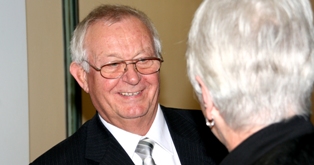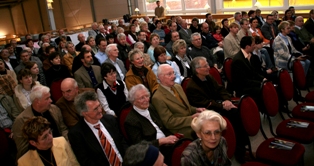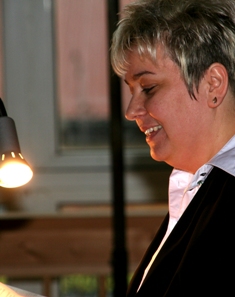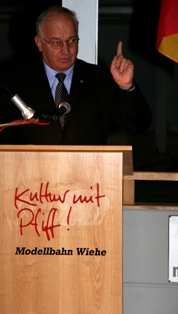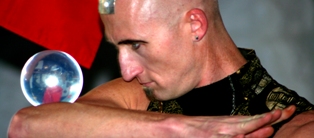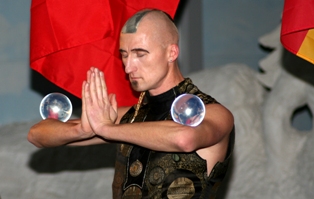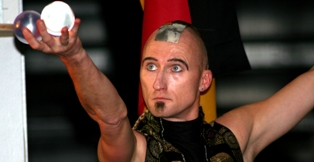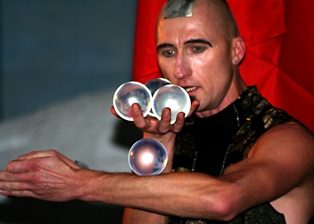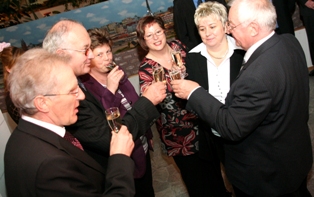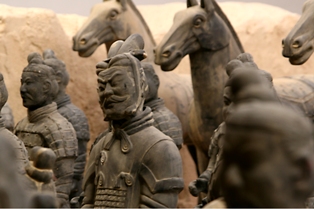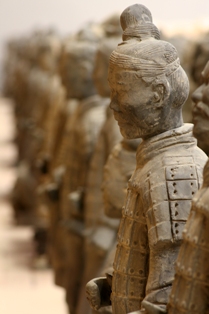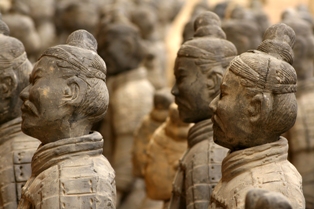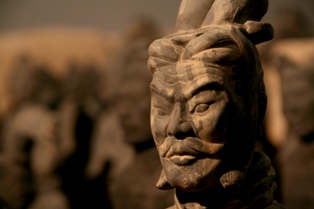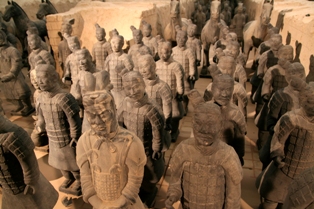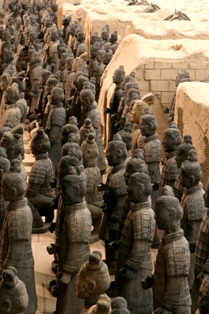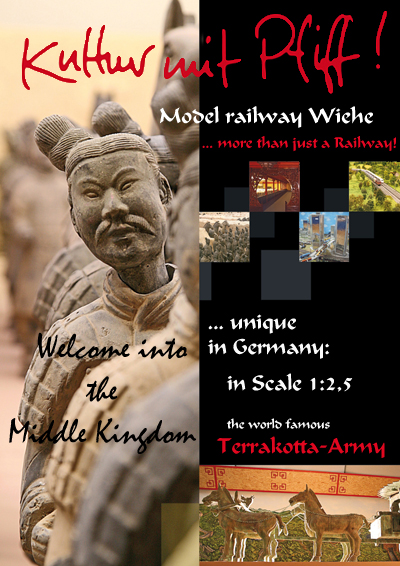
The discovery of the clay warriors
It was 1974 at the beginning of spring.
In the village Xiyang, community Yanzhai, district Lintong, province Shaanxi, it was decided to dig a new well, to be able to irrigate the spring drought affected areas. The place was in a Persimonen-forrest south of the village.
On the fifth day of excavation-work was found a hard layer of burnt red clay. This was the beginning of the excavation of an entire army - which is call today the 8th Wonder of the world and is designated on the list of world stands. In the exhibition, which shows the excavation site, you will receive over 780 warriors on a scale of 1:2.5, 6 life-size officers and generals and the Emperor Quin Shi Huangdi in life-size. Also the imperial bronze overland wagon and other antiques, weapons an documents have their permanent quarters in Wiehe. All figures are faithful replicas of the famous clay warriors from China.
The archaeologists are agreed, that the formation of the clay-figures was in the same time as the construction of the entire instalation. They was created from 220 to 210 before the birth of Christ. Each warrior radiates ist own personality, because the facial features and clothing and hairstyles are different. Among the finds are also two horse carriages made of bronze, wich is served as imperial overland wagon.
Also this bronze imperial carriages you can admire. - Meet with History - that's CULTURE WITH PEP.
The clay Army
As in the spring of 1974 the first clay warrior was snatched ungentle of the darkness of his 2200 years old grave and his comrades beheld the light of a public astonished world, the archaeologists and the historians were faced with many riddles:
What did they do there?
How and why were they born?
Why the showed traces of fire?
... to name just a few of the questions obviously enumerate.
Many large and small problems are now solved. The clay soldiers - carefully assembled and restored - have begun to back up to: A documentation of the obvious power of the first emperor in Chinese history and the evdence, how carefully the history of Chinese ancient scribe their approach, above all Sima Qian, although was born about 100 years later, the tomb Shi Huang Dis accurtely described.
The pits with the clayarmy is 1.5 kilometers east of the grave. According to the order of the pits were excavated with 1, 2 to 3 numbered. The t hree pits have been associated with wood and tamped clay attached. First a huge about five meters deep hole was excavated. Then on the floor were dispersed bulk earth, which is tamped.
Thus, layer by layer, a solid foundation was created. Then they moved walls, which also consisted of tamped earth and was 3 meters high. The "face" between the walls got a gray floor tiles. Then the clay figures were made.
Along both sides at the foot of each intermediate wall and along the pit perimeter plinth beams were fastened, where in even intervals wooden pillars were installed.
These columns were transverse and longitudinal beams, on which the roof rested, from the mats consisted of coverd thick wood panels. Then lay a thick layer of clay, sand and lime. Depening on your needs, the number of inputs and passes into the individual mines vary. After the preparation of the clay figures were passages seales with wood blocks and tamped earth.
Although the three pits are separated from each other, the figures give the impression of a closed army.
Figures with different facial expressions
In the pit, there are numerous warrior figures with the same clothes, but their striking faces are different. That is the reason why these clay so appreciated. The various hats and hairstyles of the figures show that they rank different officers or soldiers are different. The fine hair of some characters are clearly recognizable. The facial expressions and feelings of the figures demonstrate the heroic spirit of the Qin-dynasty, nevertheless was only ephemeral.
Due to the various facial expressions and feeling the artists penetrated the inner world of her figures. The figures reflect hich ideals of the Qin-dynasty again. Therefore, the clay figures from the Qin era still on the attraction.
Pictures fron the Opening Event at 2008/11/07
The Army
Pictures: Christopher Siebenhüner





